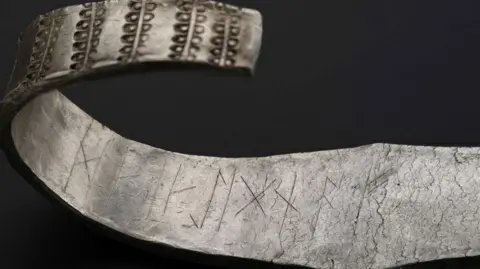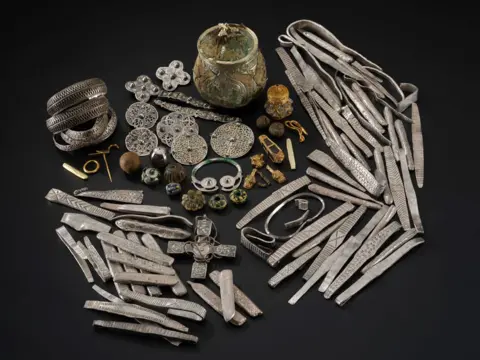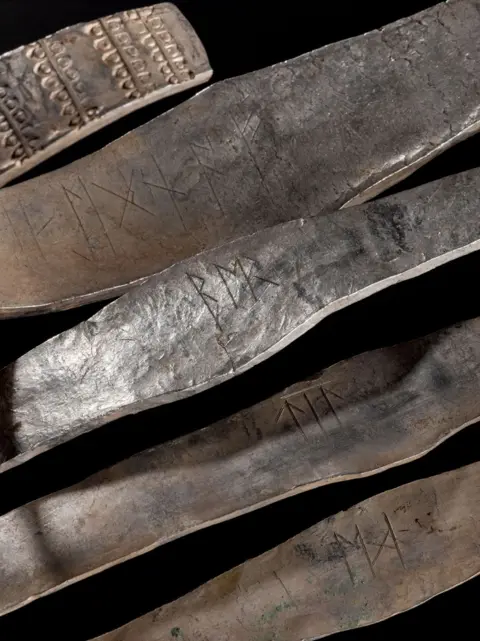Rune suggests Galloway Hoard belonged to community
 NMS
NMSA first translation of a runic inscription on an arm ring from a Viking-age hoard unearthed by a metal detectorist in southern Scotland has shed new light on who owned it.
Since its discovery in 2014 in Galloway, there have been a number of theories.
A team at National Museums Scotland (NMS) which has been studying the hoard has translated a rune as: "This is the community's wealth/property."
Dr Martin Goldberg said it was another "really interesting and significant development in our understanding of the Galloway Hoard."
 NMS
NMSThe new translation was revealed as items from the Galloway Hoard, regarded as one of the UK's most important archaeological finds this century, began an international tour starting in Adelaide in Australia.
Dr Goldberg said: "The idea that the wealth this hoard represents would be communally-held is fascinating.
"It does still leave us with unanswered questions around the circumstances in which a community's wealth would come to be buried, and also which particular community.
"Some material within the hoard, such as the pectoral cross and the rock crystal jar made for a Bishop Hyguald, would support this being a religious community."
 NMS
NMSLeading runologist Dr David Parsons of the University of Wales who has previously translated other runic inscriptions from the Galloway Hoard said it was a "difficult and unusual inscription".
"There are a number of things which are technically 'wrong' when we compare it with what we know about 'correct' runic writing," he said.
"However, if we think about both spoken and written English today, there are a huge range of regional and idiomatic variations and, if we allow for this, then it becomes possible to accept this as a plausible reading.
"And in the context of what can deduce about the Galloway Hoard it becomes really quite compelling."
The finding comes at the end of a three-year research project into the hoard.
The arm ring will be on display at the South Australian Museum in Adelaide as part of the touring exhibition which opens on Saturday.
